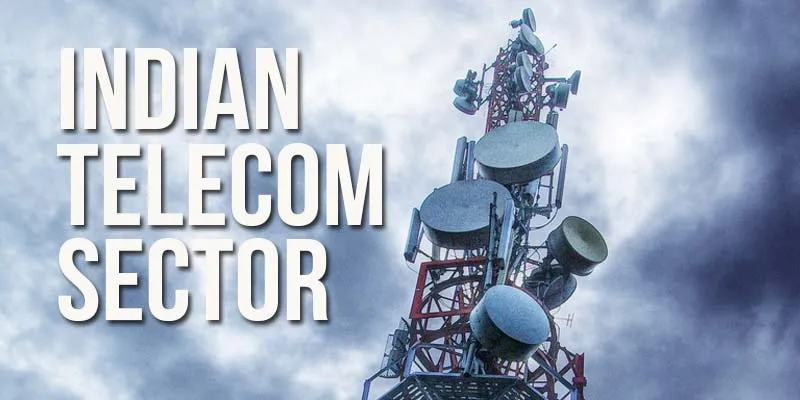Budget 2018-19: Debt-ridden telecom sector awaits relaxation of licence fees, large fiscal incentives
With revenues declining for the first time since 2008-09, analysts say there is a need to classify telecom as an ‘essential service’, and make it GST-free or taxable under the lowest slab of 5 percent.
The year 2017 was a difficult one for the Indian telecom sectror as debts piled, competition intensified, ARPUs dropped, and several operators neared oblivion.
Much of it was touted as the ‘Jio Effect’ — a term that became as ubiquitous as a cell phone connection in India. We have more than a billion of them, according to the latest TRAI estimate.
Despite an explosion in demand for newer services like 4G and 4G VoLTE, which catapulted India to the status of the world’s second-largest telecom market, debt-ridden telcos continued to be under severe stress.

CRISIL estimates that telecom ARPUs hit a five-year low of Rs 150, and revenues of incumbent operators fell by 10 percent year-on-year. This was mainly triggered by the dramatic drop in data prices after the introduction of Reliance Jio in late 2016. The Mary Meeker Internet Trends Report pegged the drop at 48 percent in less than a year.
Brokerage firm CLSA, in a separate report, revealed that annual telecom sector revenues declined for the first time since 2008-09 to Rs 1.88 trillion in 2016-17, and were likely to decrease further to Rs 1.84 trillion in 2017-18.
Hence, the picture looks rather bleak as we go into the Union Budget 2018-19. Telecom companies, of course, would have much to expect in terms of policies and incentives. But, they remain tight-lipped.
YourStory reached out to India’s top four telecom operators — Bharti Airtel, Vodafone India, Idea Cellular and Reliance Jio —but each of them declined to comment on the Budget. We then spoke to telecom analysts, tax experts, and industry observers to understand what this critical industry needs in 2018.
Reduction in licence fee, spectrum charges
While the government is acutely aware of the issues plaguing telecom, and has sought to provide some relief in the form of increased spectrum cap and 100 percent FDI, it needs to chart a path to restructure the debt burden on the industry. Experts say one way to do this is by bringing down both licence fees and spectrum usage charges.
At present, telcos pay about 8 percent of their adjusted gross revenue (AGR) as licence fee, and another 3 percent as spectrum usage charges (SUC). These are the government’s two avenues to earn from the telecom industry.
KG Purushothaman, Partner at KPMG India, said: “The government should also revisit the reserve price for spectrum acquisition in premium spectrum bands like the 700 MHz band.”

Major fiscal incentives
The telecom industry shells out close to 30 percent of its earnings in taxes and levies annually. Consequently, telcos are finding it “increasingly difficult” to invest in new-age technologies like 5G, IoT, virtual reality, etc, which are believed to drive the next phase of growth in mobile.
The government needs to look at telecom slightly differently.
KPMG’s Purushothaman explained:
“While the impact of GST on the end customer is still being evaluated, some sections of the industry feel the government should classify telecom as an essential service, which has either a nil GST rate or the lowest slab of 5 percent.”
Presently, telecom falls under the 18 percent GST slab. Another industry-watcher, however, rules out the possibility of any “big bang” tax revisions in telecom.
Essentially, the scope for tweaking sector-by-sector tax rates has been eliminated by GST.
Harpreet Singh, Partner, Indirect Tax, KPMG India, said, “From an indirect tax perspective, the room to provide benefits is gone now.”
“The biggest expectation from GST is to allow the facility of centralised compliance instead of compliance in 10 telecom districts. It will result in a multifold decrease in compliance costs, relieving some financial stress for operators.”
New mergers & acquisitions policy
The telecom industry has witnessed heightened M&A activity in the last 18 months. The biggest was the merger of Vodafone and Idea, which will be completed in March. It will create India’s largest telecom network with over 400 million subscribers, pushing current market leader Airtel down to the second spot.
Towards the end of 2017, Reliance Jio announced the acquisition of Reliance Communications’ wireless business, while the latter decided to down the shutters on its voice operations. Additionally, Airtel and Tata Teleservices also merged their consumer businesses.
KPMG reckoned that a streamlined M&A policy will “play a critical role in alleviating the financial stress on the sector”.
Tarun Pathak, Associate Director at Counterpoint Research, concurred. “A policy to aid the consolidation of mobile operators can be expected,” he said.







